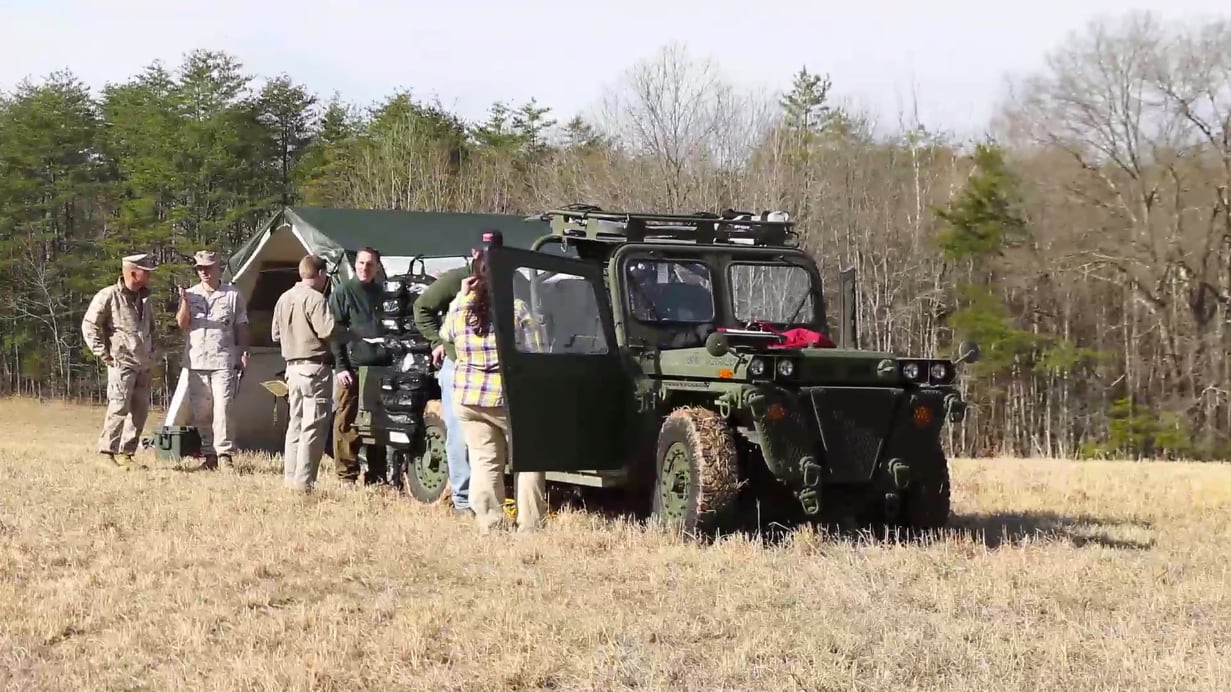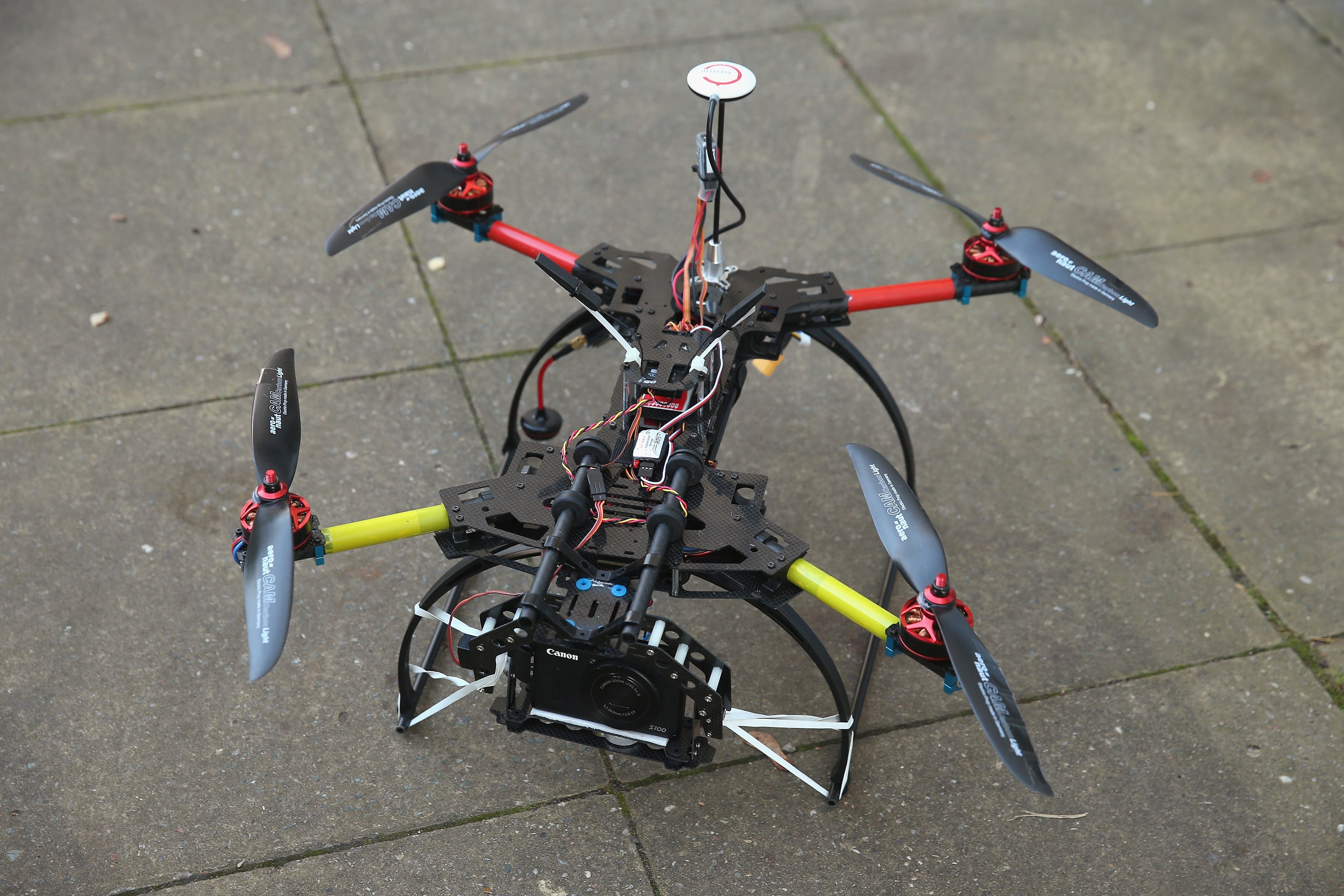As the Marine Corps reorients toward Pacific, Africa and crisis response missions in Africa and the Asia-Pacific region, the service's Futures Directorate is developing technology that will ensure serious casualties receive life-saving care within an hour of catastrophic injury — no matter how remote the battlefield.
is developing technology that will ensure serious casualties receive life-saving care within an hour of catastrophic injury — no matter how remote the battlefield.
U.S. troops drastically improved military machine perfected the evacuation of major casualties in Iraq and Afghanistan during nearly 14 years of continuous conflict, saving many who would have certainly perished during past wars conflicts.
years of continuous conflict, saving many who would have certainly perished during past wars conflicts.
But, getting Marines timely care in a theater with established medical pipelines and hundreds of rotary wing air assets zipping over across the battlefield was one thing. Doing that during long-range expeditionary operations launched from the sea over hundreds of nautical miles poses new challenges is an entirely other, said Lt. Cmdr. David B. Gribben , the Eexpeditionary Mmedicine Oofficer
, the Eexpeditionary Mmedicine Oofficer at the Futures Directorate aboard Marine Corps Base Quantico, Virginia.
at the Futures Directorate aboard Marine Corps Base Quantico, Virginia.
"We want to be able to keep the same capability with a lighter footprint than Afghanistan and Iraq," he said
If n case Marines can't be quickly transported to ship-board emergency room-level facilities care due to because of scarce air assets or distance and topography, Gribben and his team are working to bring the ER to them.
They have already proven the concept during the at Rim of the Pacific Exercise 2014 last summer using a small vehicle that can provide shock trauma care at the company
using a small vehicle that can provide shock trauma care at the company level. They also demonstrated the use of telemedicine, which uses sensors to carefully monitor and transmit a patient's vital signs so a remotely located doctor can lend his or her expertise to a corpsman.
level. They also demonstrated the use of telemedicine, which uses sensors to carefully monitor and transmit a patient's vital signs so a remotely located doctor can lend his or her expertise to a corpsman.
It is all part of the directorate's movement to adapt to the service's latest concept of operations — Expeditionary Force 21, which emphasizes sea basing and lightning-fast dispersed operations. That makes the Marine Corps more agile, but presents significant challenges for medical personnel.
"The ability to push shock trauma capability forward is what we are all about," said Gribben who deployed with Marines to Afghanistan several times to Afghanistan with Marines. "EF-21 is really our starting point. It has really given us our nNorth sStar to plan around."
with Marines. "EF-21 is really our starting point. It has really given us our nNorth sStar to plan around."
Here's a look at the directorate's most important life-saving pursuits.
Shock Trauma Section
The STS is a self-contained package that provides a medical team with everything they need to stabilize a severely wounded Marine, including blood storage and the ability to warm patients in shock.

The Futures Directorate at Marine Corps Base Quantico, Va., is working to develop the Shock Trauma Section, a small vehicle-born system that can be set up and torn down in five to ten minutes to bring emergency room-level care to the battlefield. It is an important component of the service's Expeditionary Force 21 doctrine under which Marines will operate dispersed in remote regions.
Photo Credit: Marine corps video screen shot
"In its most basic mode, the STS can treat two serious patients and hold two patients at one time," according to a Futures Directorate fact sheet. It goes on to say that capability could be expanded to treat four patients and hold five.
"We are not coming up with new medicine or surgical instruments," Gribben said. "We are making sure those capabilities fit in a package that can go on an MV-22 — to shrink it down without compromising safety.
"We're focusing on power, self-sustainment, water — things that aren't very glamorous, but are the nuts and bolts of keeping a surgical team operating in in an austere environment.
"The problem is that to be able to maneuver with ground forces. We have to keep it very light with four people and they will need more frequent resupply than in the past," Gribben said.
UAVs and robots
So as not to divert logistics and transportation resources away from the fight, a small autonomous medical resupply unmanned aerial vehicle UAV is also in the works.
"It will safely transport critical medical supplies such as medicine, blood, and blood products across the battlefield," according to a directorate fact sheet.
Called the Class VIII Delivery UAV, it could even allow one STS without casualties to send some of their supplies to another that is overburdened, Gribben said.
But, Since corpsmen can't afford to be piloting a UAV while trying to save lives, so Futures Directorate is pursuing a vehicle that is entirely automated. What form the vehicle will take is uncertain, but the capability it would offer would be comparable to a scaled down K-Max helicopter, which proved during Marine operations in Afghanistan that autonomous resupply is possible.
While the KMAX is a full-sized helicopter originally used by private logging companies in the Pacific Northwest , the Class VIII Delivery UAV
, the Class VIII Delivery UAV will likely be more similar to the small rotary wing drones UAVs popular among hobbyists.
will likely be more similar to the small rotary wing drones UAVs popular among hobbyists.

The Marine Corps is working to develop medical resupply procedures that will rely on next-generation UAVs similar to those used by hobbyists like the one pictured here. It would be able to deliver small goods like blood to emergency medical personnel on the battlefield.
Photo Credit: Sean Gallup/Getty Images
UAVs and ground robots could eventually be used to transport casualties, although that capability decades off, Gribben said. That would require not only ways to remotely monitor patients in transit, but systems to ensure unmanned aircraft don't exceed safe limits for a wounded passenger including altitude and g-forces.
Forward surgery
Futures Directorate is also working to bring a robust surgical capability ashore since casualties on remote battlefields could face significant delays after emergency treatment at an STS, before air evacuation back to a ship.
"With one or two [Marine expeditionary units] MEUs out at sea, you still have a good amount of combat power, but far less air support than you had in Afghanistan and Iraq," Gribben said. "So, you are going to have to hold patients on the ground longer after initial intervention by an ER team. They might be on the ground for two to three hours."
If STS fulfills the role of shock trauma platoon, the military version of an emergency room, then establishing a forward surgical capability will be the equivalent of a hospital's upstairs operating room where patients go once they are breathing, major hemorrhaging is controlled, and they are stabilized for follow on treatment.
One day Marine casualties could one be stabilized, have gone under the knife, and be sutured before ever leaving the battlefield.




